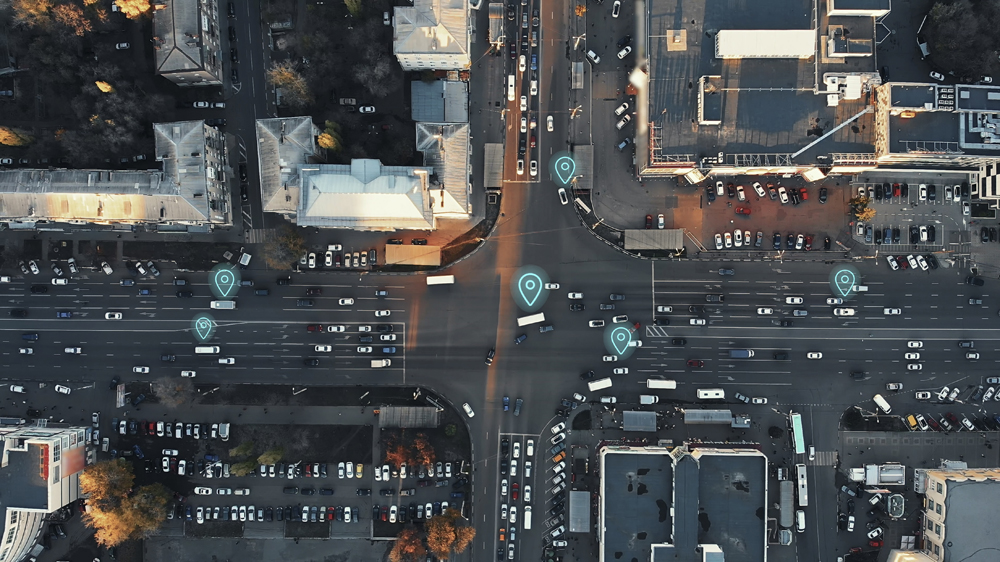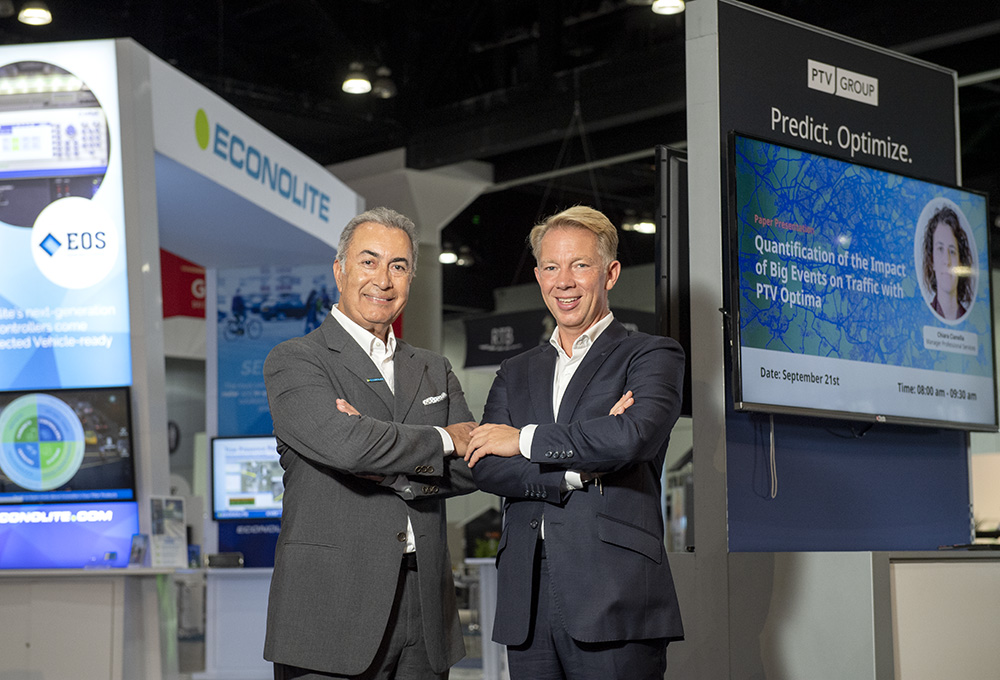
Highway systems play a vital role in modern economies and societies by facilitating the flow of people and goods across cities, towns, rural areas, regions, countries and beyond. But despite continuing advances in areas such as vehicle technology, fuel efficiency and mobile connectivity, the dream of safe, sustainable and simple highway travel has remained unfulfilled.
Forward-thinking highway operators are motivated to take the next steps and make this dream a reality. Their challenges are clear. Bring Vision Zero closer by making safety the highest priority. Play a more active role in reducing congestion and carbon emissions. And support new user services that will make every trip easier.
So how will highway operators make it all happen? By using cutting-edge digital technology and communications networks to build smart, super-connected highways that will help them manage traffic more effectively and make road travel better for everyone.
Key technology drivers for smart highways
Operators are embracing digitalisation and automation as they work to transform the highway landscape. The main technologies driving this transformation are Vehicle to Network to Everything (V2N2X) communication, autonomous vehicles (AVs) and artificial intelligence (AI)-assisted cooperative intelligent transportation systems (C-ITS).
V2N2X technology uses cellular networks, particularly 5G networks, to enable vehicles to communicate with other vehicles, road infrastructure owners/operators (IOOs) and cloud services operated by navigation service providers and auto manufacturers. It supports applications that improve road safety and traffic flow by providing drivers with real-time awareness of what’s happening around them.
AVs rely on advanced technologies such as V2N2X and 5G and a variety of sensors to operate without driver intervention. They can monitor their surroundings, make real-time decisions and navigate complex environments, sharing information with other entities along the way. As AVs become more advanced and widely adopted, they will make road travel safer, greener and more efficient.
C-ITS technology offers a data-driven approach to traffic management. It can integrate innovative technologies such as AI to support real-time data analysis and situational awareness. These systems collect and process massive volumes of data from sensors and roadside equipment to help highway operators manage traffic and ensure a rapid response to changing situations on the road.
Smart highway technologies are better together
How can highway operators use these smart technologies to make highway travel safe, sustainable and simple? The answer is to combine their capabilities to create innovative applications and services.
For example, operators can improve highway safety by using AI-assisted C-ITS with CCTV cameras and V2N2X to pre-empt accidents and prevent the escalation of emergencies. Together, these technologies can support applications that monitor road assets, detect irregularities, warn drivers about obstacles and slowdowns, and interact with vehicles to manage incidents more effectively.
Real-time traffic management applications that combine the capabilities of AVs, V2N2X and C-ITS can speed the journey to sustainable highway travel. These applications can focus on easing congestion, adjusting speed limits to maintain consistent traffic flows, optimising traffic lights or controlling lanes dynamically.
Smart services that blend the capabilities of V2N2X and AI-assisted C-ITS can help highway operators deliver simpler travel experiences. From automated toll booths to improved access to electric vehicle (EV) charging stations and in-vehicle updates about road conditions and parking, there are many opportunities to make life easier for highway users.
Why smart highways need smarter communications networks
All these innovative applications have one thing in common: they require entirely new levels of performance from highway communication infrastructure. To get the most from every application and realise the full potential of smart highways, operators need more scalable, flexible and reliable wide area networks (WANs) and data centre networks.
For instance, the WAN needs to be able to provide robust and reliable connectivity for a much wider range of ITS equipment—traffic signal control systems, message signs, licence plate recognition systems, CCTV and speed cameras, environmental sensors and more—with wired and wireless network technologies. It also needs the ability to support new C-ITS, V2N2X and AV technologies and sustain vital legacy services such as SCADA and roadside call systems with one network infrastructure.
To speed the transition to data-driven highway operations, the WAN must make it easier for operational technology (OT) and applications to exchange information by providing more bandwidth and effective connectivity to data centres. Highway operators also need to upgrade their data centre networks to ensure that they will be able to handle the data- and compute-intensive nature of AI workloads.
The increased connectivity end points and volume of communication that come with highway digitalisation could provide bad actors with more opportunities to launch cyberattacks on mission-critical systems and data. These will eventually include attacks powered by quantum computing, which could compromise the encryption methods currently used to protect highway communications. To defend against these threats, operators need solutions that can provide zero-trust security and quantum-resistant encryption.
Laying the foundation for smarter, more connected highways
Nokia network solutions for smart highways are built to ensure that operators can take full advantage of their digitalisation and automation investments to make road travel safer, simpler and more sustainable.
The core of our highway portfolio is a multiservice mission-critical IP/MPLS and optical WAN that extends flexible, robust and secure connectivity to every aspect of highway operations—equipment, applications, data centres and workers. It provides deterministic quality of service (QoS) that adapts the network to each application’s latency and performance needs to keep traffic and data flowing smoothly.
OT cloud networking, with seamless WAN interworking, makes it easier for highway operators to realise all the potential of C-ITS, data analytics and AI applications. By deploying the application software in a high-performance cloud dedicated to OT, operators can ensure that it will be able to communicate seamlessly and continuously with roadside OT assets such as CCTV cameras and ITS equipment.
AI-optimised data centre networking allows operators to meet the stringent data and compute demands of AI workloads. This enables AI models to process huge volumes of data so they can predict incidents and detect anomalies across the highway system, making travel safer and more efficient. Our solutions also provide the high resiliency, high capacity and lossless networking required to keep AI applications running at their best.
Networking capability such as segment routing helps highway operators accelerate their transformation by extending the mission-critical WAN to connect new equipment. With segment routing, it’s easy to connect roadside ITS devices on a massive scale and continuously evolve the network to integrate new digital services.
We provide cybersecurity solutions that let operators turn the WAN into a strong first line of defence against increasingly large, complex and frequent cyber threats. Our solutions enhance protection for highway infrastructure, networks, applications and data with a zero-trust model and a defence-in-depth framework that builds strong security into multiple layers of the network. They also allow operators to implement quantum-safe networking across the WAN and data centre by using symmetric key encryption with a session key length of at least 256 bits.
Join Nokia for the journey to super-connected highways
New technologies such as V2N2X, AV and AI-assisted C-ITS promise to help highway operators transform transportation infrastructure and revolutionise road travel. To realise this promise, they will need resilient, secure, high-capacity mission-critical IP/MPLS and optical WANs that can meet the connectivity demands of innovations such as OT cloud networking, AI integration and quantum-safe communications.
Nokia is the right partner for your journey to smart, super-connected highways. We offer a field-proven product portfolio that spans IP/MPLS, data centre networking, optical transport, microwave transmission and security. And we back our products with a full suite of professional services and expertise that have earned the trust of network operators worldwide. With our help, you can read the road ahead and make your highway network safer, more sustainable and simpler to use.
Find out more
Register for our live webinar on 9 April to learn more about how you can evolve your highway communications network to ensure safe, sustainable and simple travel experiences.
Read our white paper to gain an in-depth view of how new WAN capabilities and innovative use cases can help you unlock the full potential of smart highways.
Watch our video (below) for a quick view of how our network solutions can help you ensure stress-free travel experiences for every highway user.

ABOUT THE AUTHOR
Fai Lam is marketing director, network infrastructure, at Nokia
Content produced in association with Nokia












